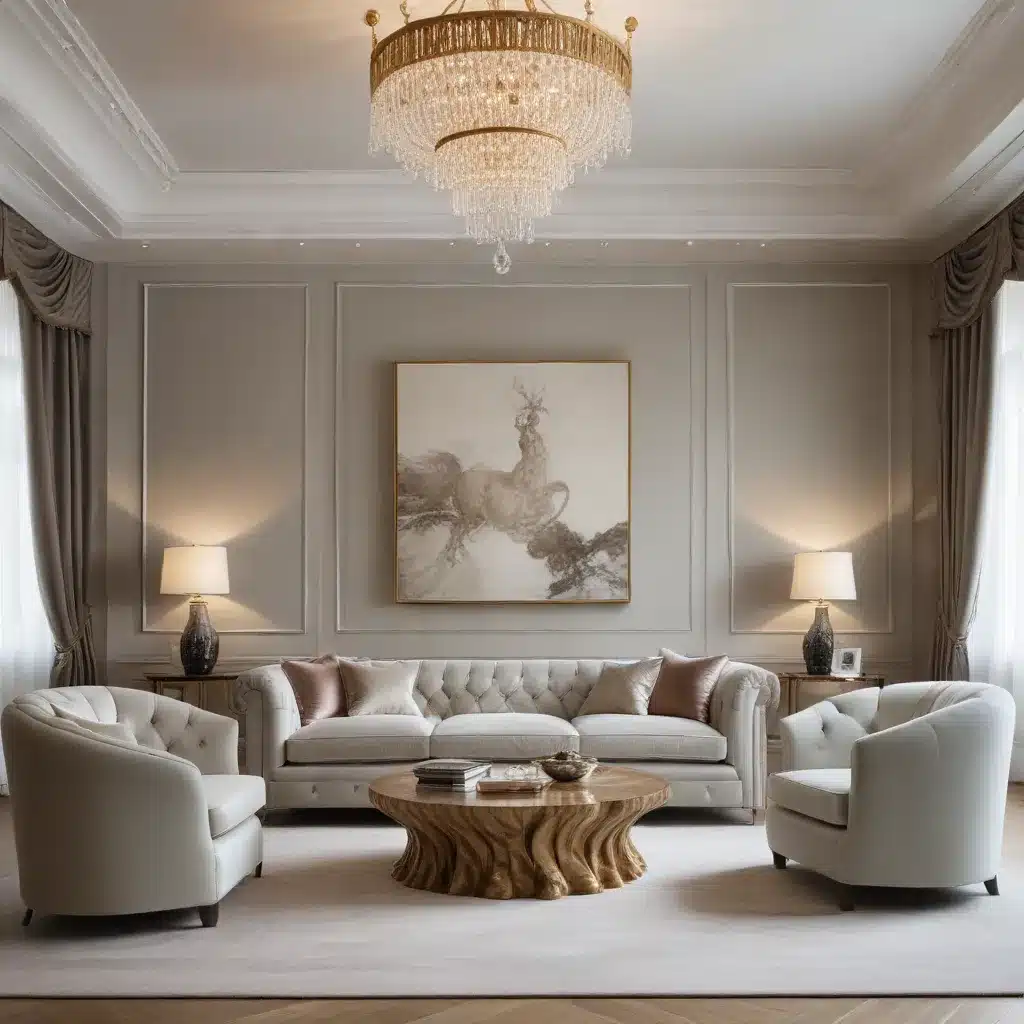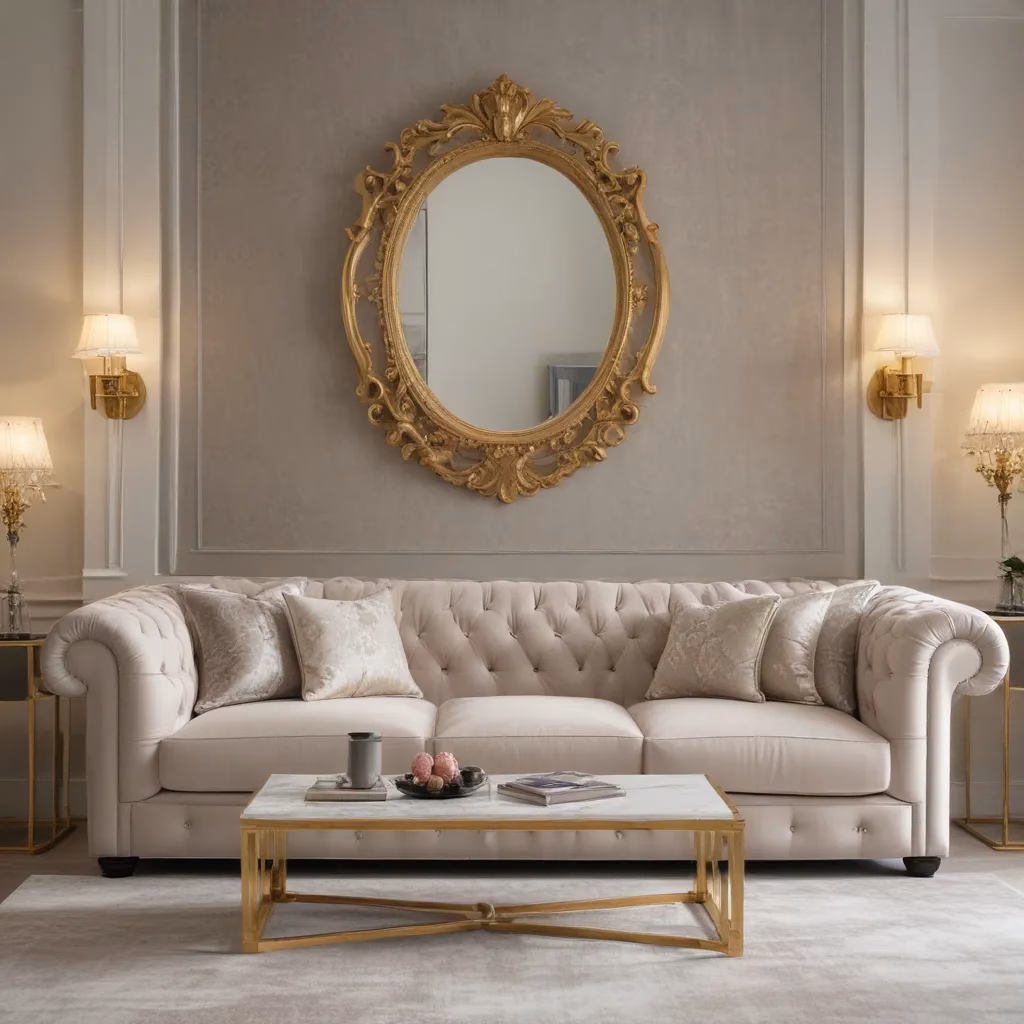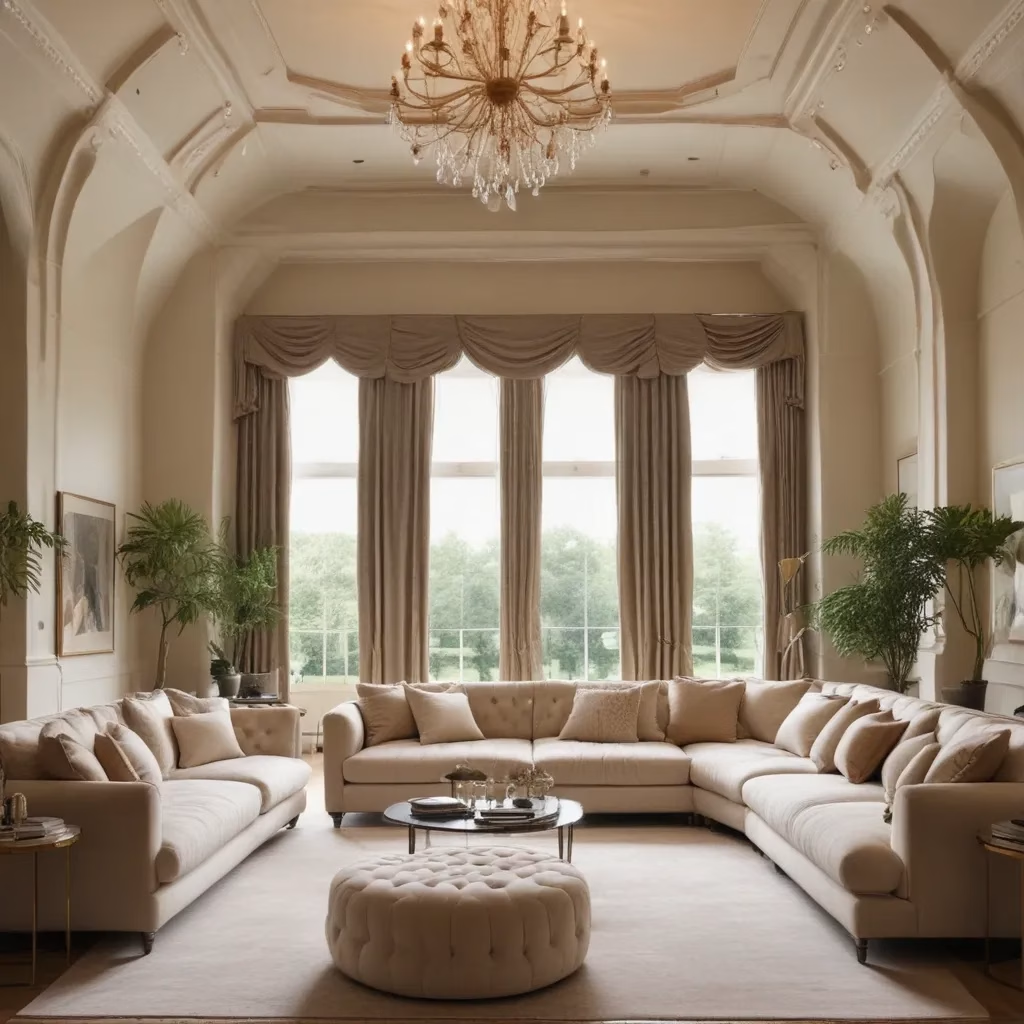
The Art of Sofa Selection
As a furniture specialist with years of experience, I’ve seen countless homes transformed by the perfect sofa. It’s not just a piece of furniture; it’s the heart of your living space. When you’re in the market for a new sofa, there’s so much more to consider than just how it looks. Let me share some insights that will help you make an informed decision.
First and foremost, comfort is key. You’ll be spending countless hours on your sofa, so it needs to feel like a dream. I always recommend sitting on a sofa for at least 15 minutes before making a purchase. Pay attention to the cushion density, the back support, and how your feet rest on the floor. A truly comfortable sofa should allow you to sink in slightly without feeling like you’re being swallowed whole.
But comfort isn’t just about the immediate feel. You need to think long-term. That’s where the frame comes in. A high-quality sofa frame is the backbone of durability. In my experience, hardwood frames, particularly those made from kiln-dried oak, maple, or beech, offer the best longevity. They’re resistant to warping and can withstand the test of time and use.
When it comes to upholstery, the options can be overwhelming. Leather, while pricey, offers a timeless look and improves with age. Fabric upholstery, on the other hand, provides more variety in terms of texture and pattern. If you have pets or children, performance fabrics have come a long way. They’re stain-resistant and easy to clean, without sacrificing style.
Sofa Designs That Stand Out
In recent years, I’ve noticed a shift towards more personalized, bespoke sofa designs. Homeowners are no longer satisfied with off-the-shelf options. They want pieces that reflect their individuality and complement their unique spaces. This trend has given rise to some truly spectacular sofa creations.
One design that’s caught my eye is inspired by Scandinavian aesthetics. These sofas often feature clean lines and organic forms, blending functionality with beauty. They typically have a lighter visual weight, which can make a room feel more spacious. The use of natural materials, like wood for the legs or frame, adds warmth and connects the piece to nature.
Another trend I’m excited about is the revival of modular sofas. These versatile pieces allow you to reconfigure your living space on a whim. Want a traditional three-seater for movie night? Easy. Need extra seating for a party? Just add a chaise or ottoman. The flexibility is unmatched, and it’s perfect for those who love to shake things up now and then.
Custom upholstery has also become more accessible. I’ve worked with clients who’ve chosen everything from bold geometric patterns to subtle textures that add depth to a room. The key is to balance your personal taste with the overall design of your space. A sofa in a striking fabric can serve as a focal point, while a more neutral choice can be a canvas for colorful throw pillows and blankets.
Maintaining Your Sofa’s Splendor
Once you’ve found your perfect sofa, you’ll want to keep it looking its best for years to come. Proper maintenance is crucial, and it’s not as daunting as you might think. Let me share some professional tips that will help you preserve your sofa’s beauty and extend its life.
Regular vacuuming is your first line of defense against wear and tear. Use the upholstery attachment to gently remove dust and debris from the surface and crevices. For fabric sofas, I recommend doing this weekly. Leather sofas can be wiped down with a dry cloth instead.
Spills happen, but they don’t have to spell disaster. The key is to act quickly. Blot – don’t rub – the spill with a clean, white cloth. For water-based stains on fabric upholstery, a mixture of mild soap and warm water can work wonders. Always test any cleaning solution on a hidden area first to ensure it won’t damage the fabric.
Sunlight can be a sofa’s worst enemy, causing fading and fabric degradation. If your sofa is near a window, consider using sheer curtains or UV-protective window film to filter out harmful rays. Rotating cushions regularly can also help ensure even wear and sun exposure.
For leather sofas, conditioning is essential. Every six months, apply a high-quality leather conditioner to keep the material supple and prevent cracking. Be sure to choose a product that’s appropriate for your specific type of leather.
The Role of Sofas in Interior Design
As an interior design enthusiast, I can’t stress enough how pivotal a sofa is in setting the tone for a room. It’s often the largest piece of furniture in a living space, and as such, it carries significant visual weight. When I’m helping clients design their rooms, the sofa is usually our starting point.
Scale is crucial. A sofa that’s too large can make a room feel cramped, while one that’s too small might look lost in a spacious area. I always recommend measuring your space carefully and using painter’s tape to outline the sofa’s dimensions on the floor. This gives you a real sense of how it will fit and how much room you’ll have for other furniture.
Color is another important consideration. While neutral sofas offer versatility, don’t be afraid of color. A richly hued sofa can anchor a room and provide a beautiful contrast to neutral walls. If you’re hesitant about committing to a bold color, consider a sofa in a more subdued shade and use vibrant throw pillows for pops of color.
The style of your sofa should harmonize with your overall interior design. In a minimalist space, a sleek, low-profile sofa with thin legs can enhance the clean aesthetic. For a more traditional room, a rolled-arm sofa with turned legs might be the perfect fit. The key is to create a cohesive look that feels intentional and reflects your personal style.
Innovative Materials in Sofa Construction
The world of sofa manufacturing is constantly evolving, with new materials and technologies emerging all the time. As someone who’s passionate about furniture, I find these innovations fascinating. Let me share some of the exciting developments I’ve seen in recent years.
Eco-friendly materials are becoming increasingly popular, and for good reason. Manufacturers are now using recycled and sustainable materials in sofa construction without sacrificing quality or comfort. For example, some companies are using recycled plastic bottles to create durable, stain-resistant upholstery fabrics. These materials not only look great but also help reduce environmental impact.
Memory foam, long used in mattresses, has made its way into sofa cushions. This material conforms to your body, providing exceptional comfort and support. It’s particularly beneficial for those with back issues or anyone who spends long hours sitting.
Advanced synthetic leathers have come a long way. Some are now virtually indistinguishable from genuine leather, offering the same luxurious look and feel at a fraction of the cost. They’re also often more durable and easier to clean than their natural counterparts.
Smart fabrics are another exciting development. These high-tech textiles can resist stains, repel water, and even regulate temperature. Some are infused with antimicrobial properties, making them ideal for households with allergies or pets.
The Psychology of Sofa Placement
Believe it or not, where you place your sofa can have a significant impact on how you use and enjoy your space. Over the years, I’ve learned that sofa placement is as much about psychology as it is about aesthetics.
In most living rooms, the sofa serves as the anchor point. Positioning it to face the room’s focal point – be it a fireplace, a view, or a television – creates a sense of purpose and direction. This arrangement naturally draws people into the space and encourages conversation.
If you have a large room, consider floating the sofa away from the walls. This can create a more intimate seating area and make the room feel cozier. Pair it with armchairs or love seats to form a conversational grouping.
For open-plan spaces, a sofa can act as a room divider. Placing it perpendicular to a wall can help define separate areas within a larger space, such as distinguishing between a living area and a dining area.
Don’t forget about traffic flow. Ensure there’s enough space to walk comfortably around the sofa. A good rule of thumb is to leave at least 30 inches of walking space around furniture.
Sofa Trends on the Horizon
As we look to the future, I’m excited about the sofa trends emerging on the horizon. These trends reflect changing lifestyles and evolving design preferences.
Multifunctional sofas are gaining popularity, especially in urban areas where space is at a premium. Sofa beds have come a long way from the clunky models of the past. Today’s designs are sleek and comfortable, seamlessly transitioning from seating to sleeping.
Curved sofas are making a comeback. These elegant pieces add a touch of softness to rooms dominated by straight lines and right angles. They’re particularly effective in creating intimate seating areas in larger spaces.
Sustainability continues to be a driving force in sofa design. Look for more sofas made with recycled or upcycled materials, as well as those designed for easy disassembly and recycling at the end of their life.
Technology integration is another trend to watch. We’re seeing sofas with built-in USB ports for charging devices, as well as smart fabrics that can heat or cool based on body temperature.
Choosing a Sofa for Different Lifestyles
One size doesn’t fit all when it comes to sofas. Your lifestyle should play a significant role in your choice. Let me break down some considerations for different living situations.
For families with young children, durability is key. Look for sofas with sturdy frames and easy-to-clean fabrics. Removable, washable covers can be a lifesaver. Dark colors or patterns can help hide inevitable spills and stains.
Pet owners should prioritize fabrics that resist claw marks and fur. Leather and tightly woven fabrics are good options. Avoid loose weaves that can snag easily. Consider the color of your pet’s fur when choosing your sofa color to minimize the appearance of shedding.
If you entertain frequently, a sectional sofa might be your best bet. These versatile pieces offer ample seating and can be reconfigured to suit different gatherings. Look for modular designs that allow you to add or remove sections as needed.
For those who work from home, a sofa with good back support is essential. Consider designs with higher backs or additional lumbar support. Some sofas even come with adjustable headrests for extra comfort during those long video calls.
The Art of Mixing and Matching
Creating a cohesive look in your living space doesn’t mean everything has to match perfectly. In fact, some of the most interesting interiors I’ve seen incorporate a mix of styles and textures. Here’s how you can master the art of mixing and matching with your sofa as the centerpiece.
Start with your sofa as the foundation. If you have a neutral sofa, you have more freedom to play with color and pattern in your other furnishings. A bold, patterned sofa, on the other hand, might call for more subdued surrounding pieces.
Don’t be afraid to mix different textures. A leather sofa can be beautifully complemented by a chunky knit throw or velvet pillows. The contrast adds depth and interest to your space.
When it comes to accent chairs, they don’t have to be an exact match to your sofa. Instead, look for pieces that share a common element – it could be a color, a material, or a design era. This creates a sense of harmony without being too matchy-matchy.
Coffee tables and side tables offer another opportunity for contrast. A sleek, modern sofa can be paired with a rustic wood coffee table for an eclectic look. Or, match the lines of your sofa with tables of a similar style for a more cohesive appearance.
The Impact of Lighting on Your Sofa
Lighting plays a crucial role in how your sofa looks and feels within a space. It’s an aspect that’s often overlooked but can make a significant difference in the overall ambiance of your room.
Natural light can dramatically affect the appearance of your sofa’s upholstery. Colors can look different depending on the time of day and the direction of sunlight. When choosing your sofa, try to view it under lighting conditions similar to those in your home.
Artificial lighting can be used to highlight your sofa and create different moods. A floor lamp placed behind the sofa can create a cozy reading nook, while table lamps on side tables provide softer, ambient lighting for relaxed evenings.
For dramatic effect, consider using accent lighting to showcase your sofa. A picture light above a piece of artwork hung over the sofa can draw attention to both the art and the furniture.
Remember that the sheen of your sofa’s upholstery can interact with light in different ways. A velvet sofa, for instance, can look rich and luxurious under soft, warm lighting but might appear flat under harsh overhead lights.
The Future of Sofa Design
As we look ahead, the future of sofa design is an exciting frontier. Advances in technology and changing lifestyle needs are driving innovation in ways we’ve never seen before.
3D printing technology is opening up new possibilities in sofa design. This technology allows for intricate, customized designs that were previously impossible or prohibitively expensive to produce. Imagine a sofa with a frame that’s perfectly tailored to your body’s contours.
Augmented reality (AR) is set to revolutionize the sofa buying experience. With AR apps, you’ll be able to visualize different sofa styles in your actual living space before making a purchase. This technology will take the guesswork out of choosing the right size and style for your room.
As our homes become smarter, so too will our sofas. We’re likely to see more integration of technology, such as built-in speakers, wireless charging pads, and even health monitoring capabilities. Imagine a sofa that can adjust its firmness based on your posture or remind you to stand up and stretch after sitting for too long.
Sustainability will continue to be a major focus. We’ll likely see more sofas designed with circular economy principles in mind, made from materials that can be easily recycled or biodegraded at the end of their life cycle.
Modular design will likely become more sophisticated, allowing for even greater flexibility. Future sofas might be able to transform not just in shape, but in function – perhaps converting from a sofa to a dining table or a work desk.
As our living spaces continue to evolve, particularly in urban areas, we’ll see more compact, multi-functional designs. Sofas that can fold away into walls or convert into beds will become more common and more stylish.
The personalization trend will likely extend to the molecular level, with the development of smart materials that can change color or pattern at the touch of a button. This would allow you to update your sofa’s look to match your mood or the season.
While these developments are exciting, it’s important to remember that the fundamental purpose of a sofa – to provide comfort and serve as a gathering place – will remain constant. The challenge for designers and manufacturers will be to incorporate these new technologies and materials in ways that enhance, rather than detract from, the sofa’s primary function.
As we wrap up this exploration of sofas, from selection to care, from current trends to future innovations, I hope you’ve gained some valuable insights. Remember, choosing a sofa is a personal journey. It’s about finding that perfect balance of comfort, style, and functionality that works for you and your home. And if you’re looking for expert guidance and a wide selection of quality sofas, I highly recommend checking out Sofa Spectacular. Their range of bespoke and captivating masterpieces is sure to have something that speaks to your unique style and needs.



